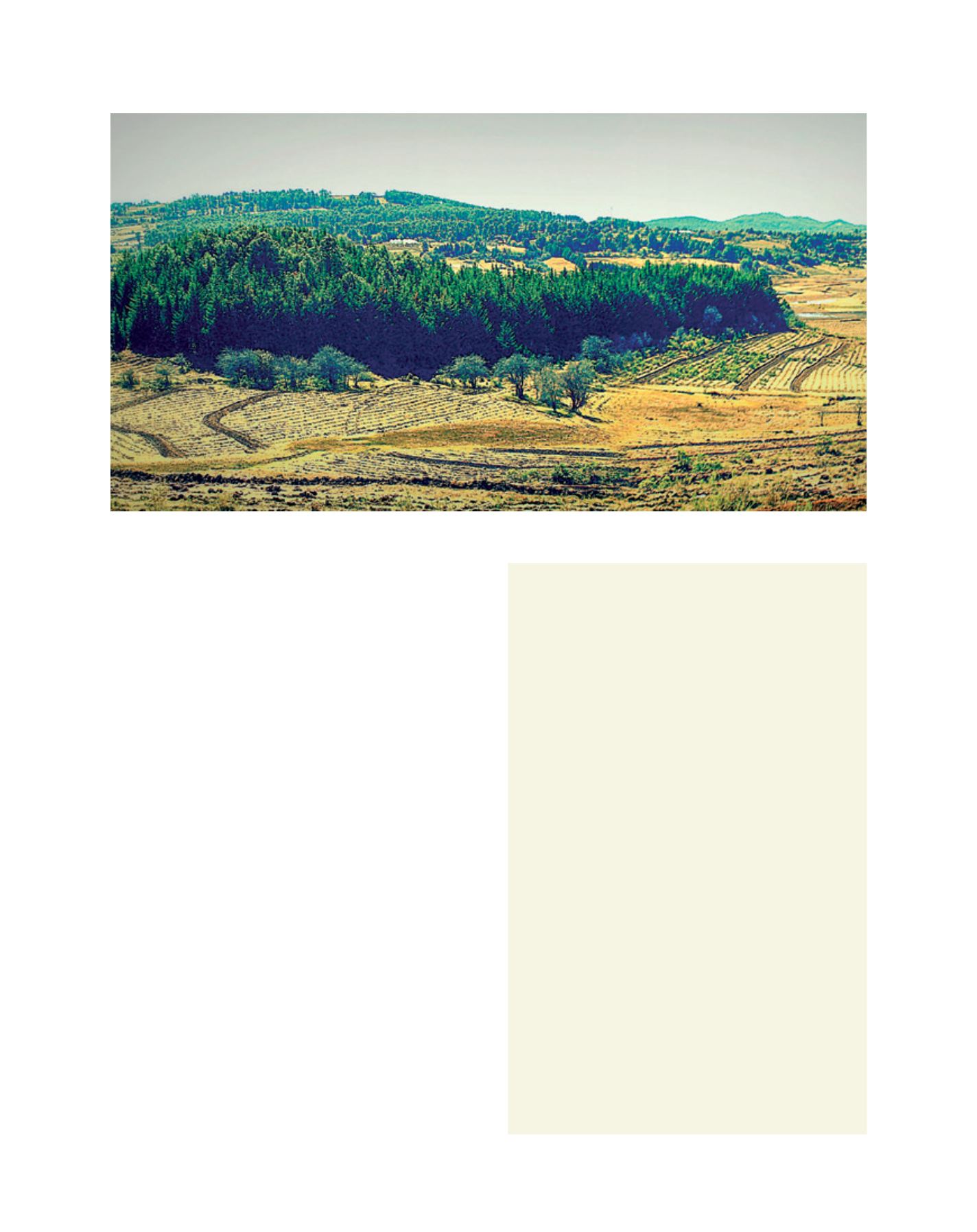

[
] 71
owners of forest lands, including rural communities and
indigenous peoples, in order to improve the effectiveness
of forest programmes in general.
Since 2003, CONAFOR has successfully implemented
a national Payment for Environmental Services (PES)
programme to compensate the owners of forest lands for the
actions taken for conservation, restoration and protection
of their forests that allow maintenance or improvements
to the provision of ecosystem services related to regulation
of the hydrological cycle, biodiversity conservation and
climate change mitigation. PES is financially supported by
resources collected through fees for water use (provided by
the National Water Commission), fiscal resources annually
allocated by the Congress and voluntary contributions by
direct beneficiaries of environmental services.
Since its beginning, PES has shifted from a passive conser-
vation scheme to one in which integrated land management
is promoted for its conservation in a compatible manner with
productive activities.
From 2003-2015, CONAFOR has invested over US$660
million to enrol over 5 million hectares in this innovative
protection scheme in order to maintain forests’ soil and
water protective functions and biodiversity conservation,
benefiting more than 7,652 ejidos, communities and small
landowners across the country.
In order to increase the flow of financial funds and
thus extend the area under PES, CONAFOR promotes the
matching-funds mechanism to involve the direct users of
environmental services in local schemes for compensa-
tion of forest landowners where the services are produced.
Currently, over 118 matching-funds agreements are signed
by CONAFOR and direct users of environmental services,
committing joint contributions of almost US$67 million.
Protecting water infrastructure through local
mechanisms of payment for environmental services
Sanalona reservoir, located in the Tamazula river 24 kilometres
from the city of Culiacan, began operation in 1948 to irrigate
95,000 hectares in the Culiacan Valley. In 1963, a hydroelectric
plant was established with a capacity to generate 14 megawatts of
power. The reservoir supplies drinking water to 675,000 people in
the Culiacan Valley and is a place of recreation and relaxation.
Concerned by the siltation of the dam due to erosion in the
recharge zone of the reservoir basin, in 2009 a group of citizens,
farmers, entrepreneurs, industrialists and water users formed an
organization called Fabricas del Agua Centro Sinaloa (FACES), to
promote actions for the hydrological restoration of watersheds in
central Sinaloa.
FACES signed a five-year collaboration agreement with CONAFOR
for the provision of matching funds to develop a local mechanism
of payment for environmental services, which would allow it to
finance forest restoration actions in the catchment basin of the
Sanalona reservoir.
Between 2009 and 2014, financial contributions to the project
were over US$940,000, of which over US$510,000 came
from farmer contributions, US$330,000 from CONAFOR and
US$100,000 from the Monsanto Foundation. The project generated
2,500 wages per year; 740,000 trees were planted; 500,000 cubic
metres of filter dams (stone and gabions) were built; and a nursery
with a capacity production of 200,000 plants was installed.
This project has directly benefited 120 people of the Imala
ejido and 200 temporal workers involved in fieldwork activities. It
indirectly benefited 314 ejido inhabitants. Social benefits include
construction of a multipurpose hall and a doctor’s room in the
health centre and the installation of roofing, libraries and air
conditioning in basic education centres. Environmental education
activities were conducted, aimed primarily at children to promote
improved solid waste management in order to prevent it from
reaching the reservoir.
FACES obtained the National Forestry Merit Award in 2014,
awarded by the Government of Mexico through the National
Forestry Commission in the category of Civil Society Organizations.
CONAFOR strengthens forest governance and promotes mechanisms for social engagement to support planning, consultation and dialogue
Image: National Forestry Commission archive
L
iving
L
and
















